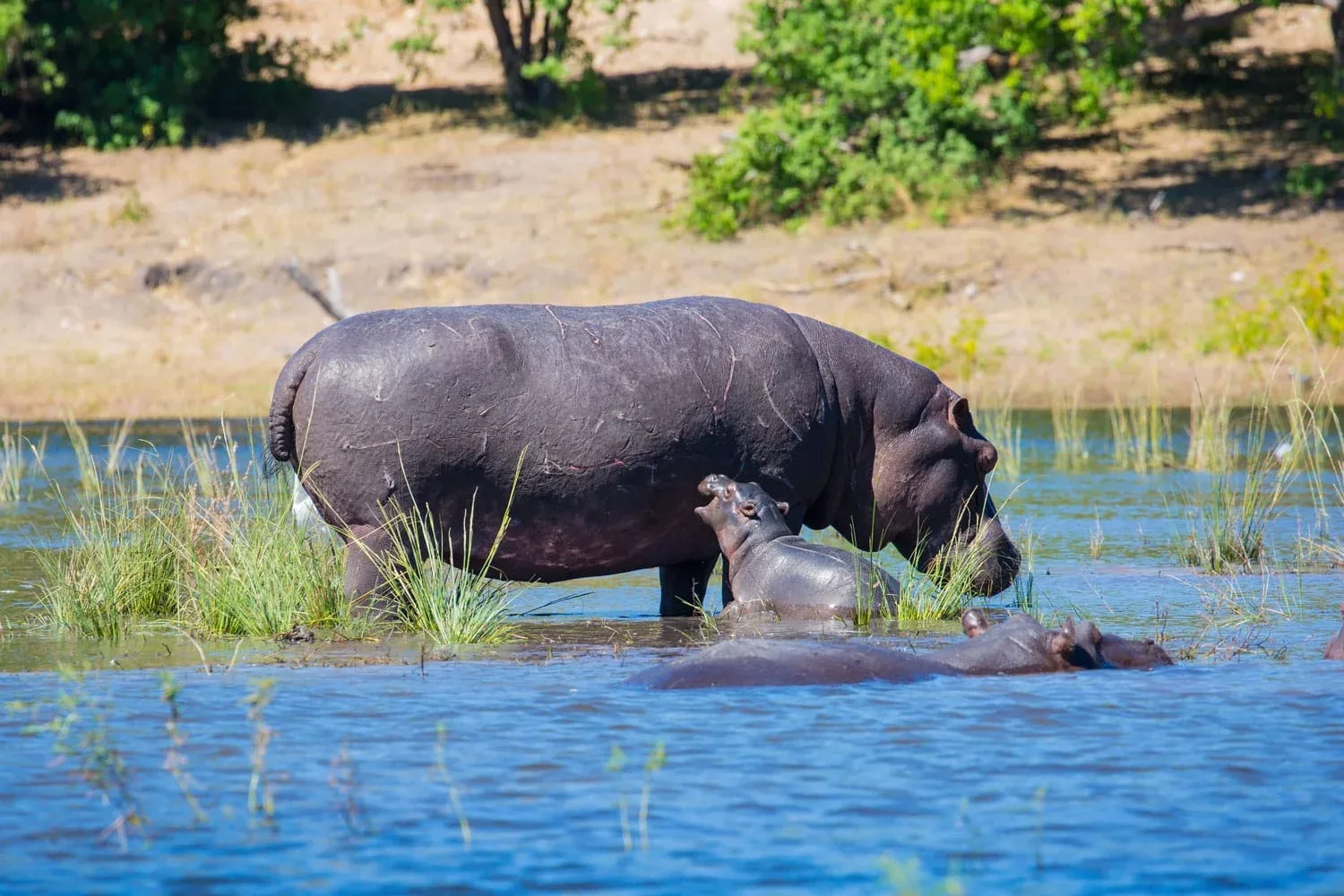
Call Us For Help!
+254 713 380 337
Address
Mombasa Rd., Pacific Crest Mall, 3rd Floor, RM 23
Mail Us
info@exodussafaris.com
- Safaris & tours
TOP DESTINATIONS
- Destinations
- Experiences
- About Us
- Blog
+254 713 380 337
Mombasa Rd., Pacific Crest Mall, 3rd Floor, RM 23
info@exodussafaris.com
Exodus Safaris is delighted to introduce Ngorongoro Crater Safaris, offering travelers an unparalleled opportunity to explore one of Africa’s most iconic natural wonders. Situated in Tanzania’s northern circuit, the Ngorongoro Crater is a UNESCO World Heritage Site renowned for its breathtaking landscapes and unparalleled wildlife diversity. Comprising an ancient volcanic caldera, the crater is home to an extraordinary concentration of wildlife, including the Big Five, zebras, wildebeests, and an array of bird species. Committed to responsible tourism and conservation, Ngorongoro Crater Safaris curated by Exodus Safaris provide travelers with an immersive and sustainable way to experience the natural wonders of this unique ecosystem.
Embarking on a Ngorongoro Crater Safari with Exodus Safaris promises an enriching adventure filled with captivating wildlife encounters and stunning scenery. Led by experienced guides with intimate knowledge of the crater, participants embark on game drives across the crater floor, providing opportunities to witness the daily activities of the resident wildlife and marvel at the breathtaking views from the crater rim.
From the lush forests and grasslands to the shimmering soda lake at the crater’s center, Ngorongoro Crater Safaris offer travelers a chance to connect with nature and gain insights into the intricate ecosystems that thrive within this natural marvel. With comfortable accommodations and personalized service, Ngorongoro Crater Safaris with Exodus Safaris provide an authentic and memorable safari experience that celebrates the wonders of the Ngorongoro Conservation Area.
Enjoy extensive game drives to observe the incredible diversity of wildlife within the crater. Spot the Big Five (lion, elephant, buffalo, rhinoceros, and leopard), zebras, wildebeests, hippos, and numerous bird species. The crater’s enclosed ecosystem provides excellent opportunities for close encounters with animals.
Ngorongoro Crater is home to a variety of bird species, making it a paradise for birdwatchers. Bring your binoculars and guidebook to spot both resident and migratory birds, including flamingos, eagles, and storks.
Visit nearby Maasai villages to learn about their traditional way of life, customs, and crafts. Engage with the Maasai people, gaining insights into their rich cultural heritage. Some tour operators offer cultural tours, providing an authentic experience.

Enjoy scenic picnics at designated spots within the crater. Many safari operators offer picnic lunches with a view, allowing you to savor delicious meals while surrounded by the natural beauty of the crater.
Capture stunning photographs of wildlife against the backdrop of the crater’s scenic landscapes. The dramatic lighting and diverse wildlife make Ngorongoro Crater a paradise for photography enthusiasts. Experienced guides can assist in finding the best angles and moments to capture.
Some safari operators offer guided nature walks along the crater rim or at specific viewpoints. These walks provide a chance to explore the flora, learn about medicinal plants, and enjoy breathtaking views while accompanied by knowledgeable guides.
Experience the crater from above by taking a hot air balloon safari. Drift silently over the wildlife-filled plains, gaining a unique and awe-inspiring perspective of the animals and landscapes below.
Enjoy sundowner cocktails at sunset viewpoints, sipping your favorite drink while watching the sun set over the crater. This tranquil experience allows you to absorb the beauty of the surroundings as the day comes to a close.
Many lodges and camps in the area host educational talks or presentations in the evenings. Experts often discuss wildlife conservation, local culture, and the geological history of the crater, providing guests with a deeper understanding of the region.


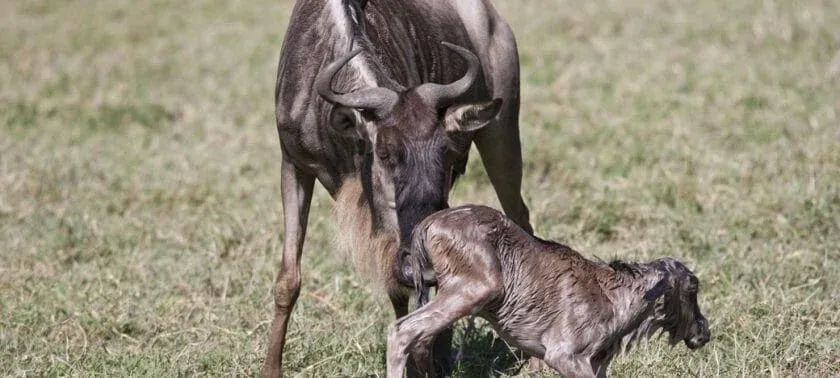
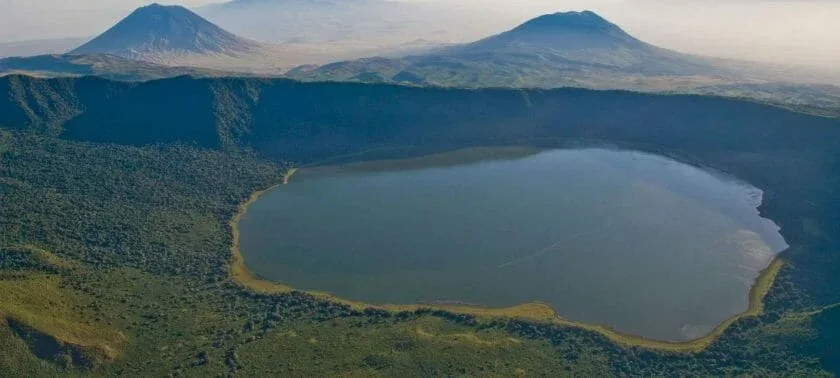

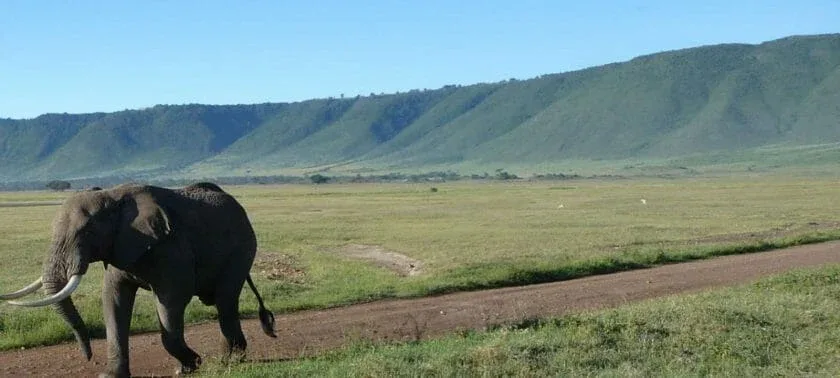

Birding Safaris in Africa
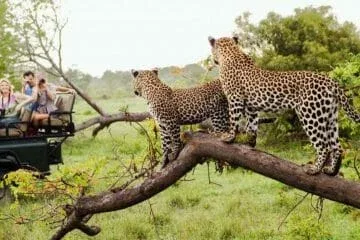
Big Five Safaris in Africa
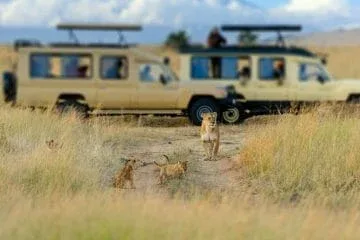
Ngorongoro Crater is unique due to its natural enclosure, creating a self-contained ecosystem with a high concentration of wildlife. It's one of the best places in Africa to see the Big Five in a relatively small area.
The best time to visit is during the dry season (from June to September) when wildlife gathers around water sources, providing excellent viewing opportunities. However, safaris are possible year-round.
You can expect to see a wide range of animals including lions, elephants, buffaloes, rhinoceroses, leopards (though they are more elusive), hippos, zebras, wildebeests, and numerous bird species.
No, accommodations are located on the crater rim due to conservation regulations. Lodges and camps on the rim offer stunning views of the crater and provide guided safari trips down to the crater floor.
No, walking safaris are not allowed on the crater floor. However, some lodges offer guided nature walks along the crater rim.
Yes, Ngorongoro Crater safaris can be combined with visits to Serengeti National Park, Lake Manyara National Park, or Tarangire National Park, creating a diverse and comprehensive safari experience.
It is highly recommended to book a guided safari. Experienced guides provide in-depth knowledge about the wildlife, enhance your safety, and ensure you make the most of your safari experience.
The weather varies, but generally, expect cool nights and early mornings, even in the dry season. Days are usually pleasant and warm, but temperatures can drop, especially during the evening game drives.
Yes, you can visit local Maasai villages to learn about their traditions, customs, and way of life, providing a cultural aspect to your safari experience.
Follow the instructions of your guide, stay inside the vehicle during game drives, and respect the wildlife's space. Additionally, carry essentials like water, sunscreen, and insect repellent, and adhere to park rules and guidelines.

Location: Inside Ngorongoro Conservation Area.
Price: $250 – $500 per person per night.
Description: Perched on the rim of the Ngorongoro Crater, this lodge offers stunning views of the crater floor. It features comfortable rooms, excellent dining options, and guided safari experiences.
Location: Inside Ngorongoro Conservation Area.
Price: $200 – $400 per person per night.
Description: Situated on Lemala Hill, this lodge provides panoramic views of the crater. Guests can enjoy spacious rooms, a swimming pool, and guided game drives into the Ngorongoro Crater.
Location: Near the crater rim.
Price: $400 – $800 per person per night.
Description: A luxury tented camp offering exclusive accommodation with en-suite bathrooms and private verandas. Ideal for those seeking a more intimate safari experience.

Location: Near the Ngorongoro Conservation Area.
Price: $500 – $1000 per person per night.
Description: A luxurious boutique hotel set within a coffee estate, offering elegant suites, gourmet dining, and personalized service. Guests can enjoy horseback riding and visits to the nearby crater.

Location: On the crater rim.
Price: $600 – $1200 per person per night.
Description: A tented camp offering breathtaking views of the Ngorongoro Crater. It provides stylish accommodation, guided walks, and exclusive game drives within the crater.

These are the most common types of safaris, where visitors are guided through the crater in 4×4 vehicles. Knowledgeable guides drive you through the crater, ensuring you spot the diverse wildlife, including the Big Five, and provide detailed information about the animals and the ecosystem.
Some lodges and camps outside the crater offer guided walking safaris along the crater rim. While you cannot walk on the crater floor due to safety regulations, these walks provide a chance to appreciate the scenery and learn about the local flora and fauna.
Specialized photographic safaris cater to photographers, providing opportunities to capture stunning images of wildlife and landscapes. These safaris often come with experienced wildlife photographers who offer guidance and tips for capturing the best shots.
Hot air balloon safaris provide a unique perspective of the crater. Drifting silently over the wildlife-filled plains during the early morning hours allows for breathtaking views and excellent photo opportunities.

Some tours include visits to nearby Maasai villages, allowing visitors to learn about the local culture, customs, and traditional way of life. These safaris provide a cultural dimension to the experience.

Private safaris offer personalized experiences tailored to your preferences. You have the flexibility to choose your itinerary, game drive times, and activities. These safaris are ideal for families, couples, or small groups seeking an exclusive experience.

Budget safaris cater to travelers on a tight budget. These safaris often involve group tours, basic accommodations, and shared facilities. They focus on providing essential experiences without luxury amenities.

Luxury safaris offer high-end accommodations, gourmet dining, private game drives, and exclusive experiences. Lodges and camps in this category provide luxurious amenities and personalized services, ensuring a lavish and comfortable stay.

Adventurous travelers can opt for self-drive safaris, where they rent a suitable vehicle and explore the crater and surrounding areas independently. This option allows for flexibility and the freedom to create your itinerary.


